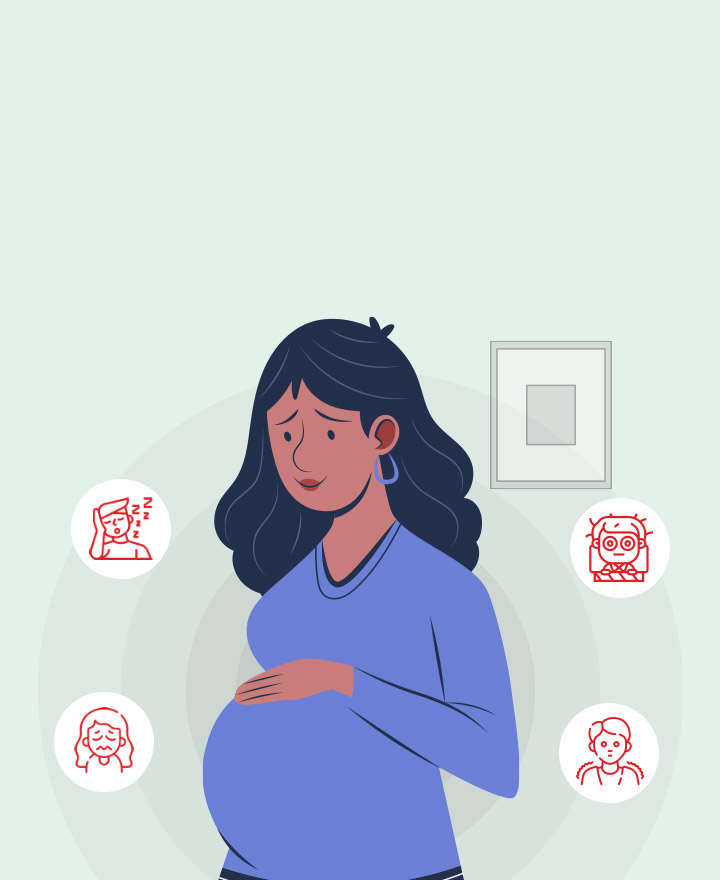Building Community Resilience to COVID-19: An Interprofessional Collaborative Model

Downloads
Introduction: Coronavirus Disease 2019 (COVID-19) is a significant global health issue, requiring vigilance and adherence to health protocols to prevent transmission. This study aimed to develop an interprofessional collaborative model based on community sectoral coordination.
Methods: A mixed-methods explanatory research design was employed, involving 934 respondents selected through convenience sampling. The research instrument was a modified version of a validated and reliable questionnaire covering interprofessional collaboration, community health nursing, alertness, compliance, and resilience. The data was analyzed using Partial Least Squares (PLS) to test the model's fit and predictive relevance.
Results: The coefficient of determination (R²) was 0.772, indicating that 77.2% of the variance in interprofessional collaborative community sectoral coordination could be explained by individual, team, task, and work structure characteristics, as well as community leaders and cross-sectoral factors. The remaining 22.8% was attributed to other variables not included in this study. The Predictive Relevance (Q²) value was greater than 0, suggesting that the model was adequately predictive. Significance testing showed that the exogenous variables had a significant impact on endogenous variables with a total T-statistics value of 1.96 or P value <0.05.
Conclusion: The developed interprofessional collaborative model based on community sectoral coordination significantly enhances community alertness, compliance, and resilience, contributing to the achievement of COVID-19 herd immunity.
Armitage, C. J. et al. (2017) ‘Preliminary support for a brief psychological intervention to improve first-time hearing aid use among adults’, British Journal of Health Psychology, 22(4), pp. 686–700. doi: 10.1111/bjhp.12244.
Barzilay, R. et al. (2020) ‘Resilience, COVID-19-related stress, anxiety and depression during the pandemic in a large population enriched for healthcare providers’, Translational Psychiatry, 10(1). doi: 10.1038/s41398-020-00982-4.
Bateman, B., Colin Wilson, F. and Bingham, D. (2002) ‘Team effectiveness–development of an audit questionnaire’, Journal of Management Development, 21(3), pp. 215–226.
Bernard Stoecklin, S. et al. (2020) ‘First cases of coronavirus disease 2019 (COVID-19) in France: surveillance, investigations and control measures, January 2020’, Euro Surveill., 25(6). doi: 10.2807/1560-7917.ES.2020.25.6.2000094.
Binnicker, M. J. (2020) ‘Emergence of a Novel Coronavirus Disease (COVID-19) and the Importance of Diagnostic Testing: Why Partnership between Clinical Laboratories, Public Health Agencies, and Industry Is Essential to Control the Outbreak’, Clinical Chemistry. doi: 10.1093/clinchem/hvaa071.
Cao, W. et al. (2020) ‘The psychological impact of the COVID-19 epidemic on college students in China’, Psychiatry Research, 287(March), p. 112934. doi: 10.1016/j.psychres.2020.112934.
Cheng, P. et al. (2020) ‘COVID-19 Epidemic Peer Support and Crisis Intervention Via Social Media’, Community Mental Health Journal. doi: 10.1007/s10597-020-00624-5.
Ekezie, W. et al. (2023) ‘A Systematic Review of Behaviour Change Techniques within Interventions to Increase Vaccine Uptake among Ethnic Minority Populations.’, Vaccines, 11(7). doi: 10.3390/vaccines11071259.
Elam-Evans, L. D. et al. (2020) ‘National, Regional, State, and Selected Local Area Vaccination Coverage Among Adolescents Aged 13–17 Years — United States, 2019’, MMWR. Morbidity and Mortality Weekly Report, 69(33), pp. 1109–1116. doi: 10.15585/mmwr.mm6933a1.
Fernandes, N. (2020) ‘Economic effects of coronavirus outbreak ( COVID-19 ) on the world economy Nuno Fernandes Full Professor of Finance IESE Business School Spain’, SSRN Electronic Journal, ISSN 1556-5068, Elsevier BV, pp. 0–29.
Gilbert, J. H. V., Yan, J. and Hoffman, S. J. (2010) ‘A WHO report: Framework for action on interprofessional education and collaborative practice’, Journal of Allied Health, 39(SUPPL. 1), pp. 196–197.
Inchausti, F. et al. (2020) ‘Psychological Intervention and COVID-19: What We Know So Far and What We Can Do’, Journal of Contemporary Psychotherapy. doi: 10.1007/s10879-020-09460-w.
Jordan, S. R., Connors, S. C. and Mastalerz, K. A. (2022) ‘Frontline healthcare workers’ perspectives on interprofessional teamwork during COVID-19.’, Journal of interprofessional education & practice, 29, p. 100550. doi: 10.1016/j.xjep.2022.100550.
Jörns-Presentati, A. and Groen, G. (2023) ‘Perceptions of Interprofessional Collaboration for Children with Multiple and Complex Needs: Development and Psychometric Evaluation of a New Scale’, Child Care in Practice, pp. 1–17.
Jörns-Presentati, A., Groen, G. and Ødegård, A. (2021) ‘Psychometric properties of the German version of the perception of interprofessional collaboration model-questionnaire (PINCOM-Q)’, International journal of integrated care, 21(4).
Kilpatrick, K. et al. (2019) ‘Team functioning and beliefs about team effectiveness in inter-professional teams: questionnaire development and validation’, Journal of Multidisciplinary Healthcare, pp. 827–839.
Lai, T. H. T. et al. (2020) ‘Stepping up infection control measures in ophthalmology during the novel coronavirus outbreak: an experience from Hong Kong’, Graefe’s Archive for Clinical and Experimental Ophthalmology, pp. 1–7. doi: 10.1007/s00417-020-04641-8.
Liu, C. et al. (2020) ‘The prevalence and influencing factors for anxiety in medical workers fighting COVID-19 in China: A cross-sectional survey’, medRxiv, p. 2020.03.05.20032003. doi: 10.1101/2020.03.05.20032003.
Nursalam, N. et al. (2020) ‘Risk factors for psychological impact and social stigma among people facing COVID 19: A systematic review’, Systematic Reviews in Pharmacy. Medknow Publications, pp. 1022–1028. doi: 10.31838/srp.2020.6.146.
Nxumalo, N. L. (2013) ‘Community health workers, community participation and community level inter-sectoral action: the challenges of implementing primary health care outreach services’. University of the Witwatersrand, Faculty of Health Sciences.
Du Preez, R. and Van Zyl, L. T. (2015) ‘Toward the development of a corporate social responsibility leadership questionnaire: An adaptation of the LBI-2’, SA Journal of Industrial Psychology, 41(1), pp. 1–18.
Reeves, S. et al. (2013) ‘Interprofessional education: effects on professional practice and healthcare outcomes (update).’, The Cochrane database of systematic reviews, 2013(3), p. CD002213. doi: 10.1002/14651858.CD002213.pub3.
Verbeek, F. H. O. et al. (2023) ‘Facilitators for developing an interprofessional learning culture in nursing homes: a scoping review’, BMC Health Services Research, 23(1), pp. 1–11. doi: 10.1186/s12913-023-09092-5.
Wang, Ying et al. (2020) ‘Acute psychological effects of Coronavirus Disease 2019 outbreak among healthcare workers in China : a cross-sectional study’, Translational Psychiatry. doi: 10.1038/s41398-020-01031-w.
Wang, Yenan et al. (2020) ‘Study on the public psychological states and its related factors during the outbreak of coronavirus disease 2019 (COVID-19) in some regions of China’, Psychology, Health and Medicine, 8506. doi: 10.1080/13548506.2020.1746817.
Wilfinger, R. (2008) ‘Design, Evaluation and Validation, and Analysis of a Five-Dimensional Leadership Questionnaire for a Project Leader in an International Scientific Research Environment’. Geneva U.
World Health Organization (WHO) (2010) Community engagement: a key component of health promotion and disease prevention, World Health Organisation.
Copyright (c) 2025 Jurnal Ners

This work is licensed under a Creative Commons Attribution 4.0 International License.
Authors who publish with Jurnal Ners agree to the following terms:
- Authors transfer the Copyright and grant Jurnal Ners the right of first publication with the work simultaneously licensed under a Creative Commons Attribution 4.0 International License that allows others to remix, adapt and build upon the work with an acknowledgment of the work's authorship and of the initial publication in Jurnal Ners.
- Authors are permitted to copy and redistribute the journal's published version of the work (e.g., post it to an institutional repository or publish it in a book), with an acknowledgment of its initial publication in Jurnal Ners.
Jurnal Ners requires a formal written declaration and transfer of copyright from the author(s) for each article published. We, therefore, ask you to complete and return this form, retaining a copy for your own records. Your cooperation is essential and appreciated. Any delay will result in a delay in publication. The form can be downloaded HERE.































